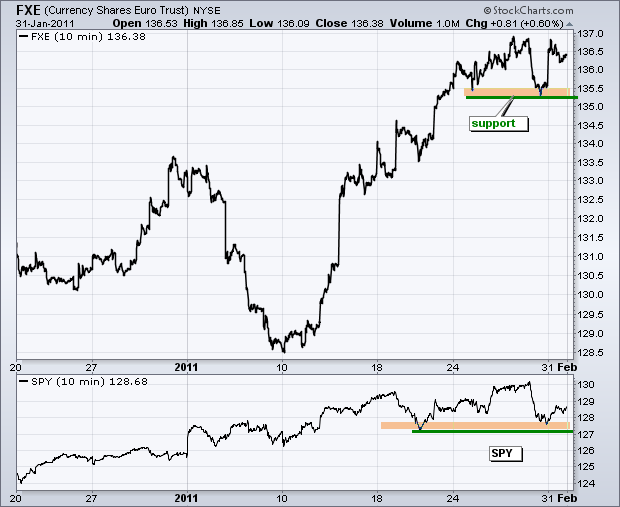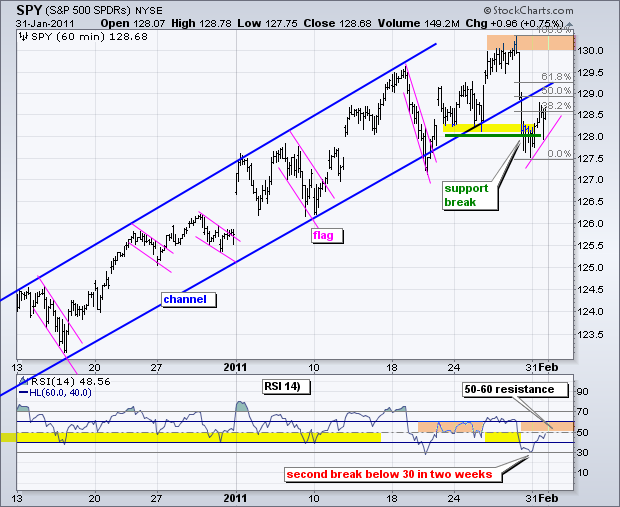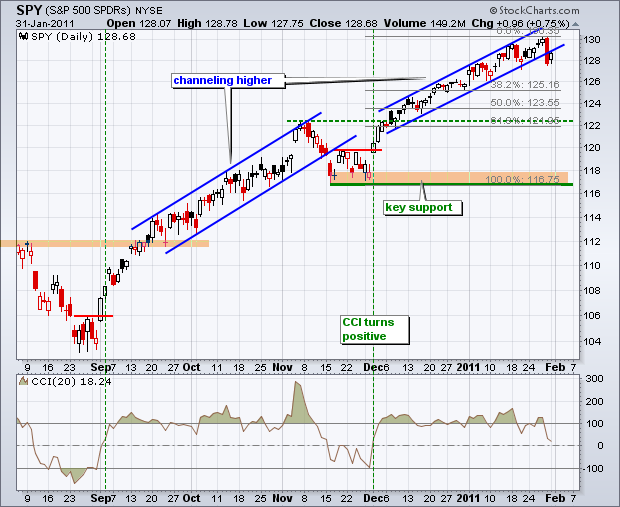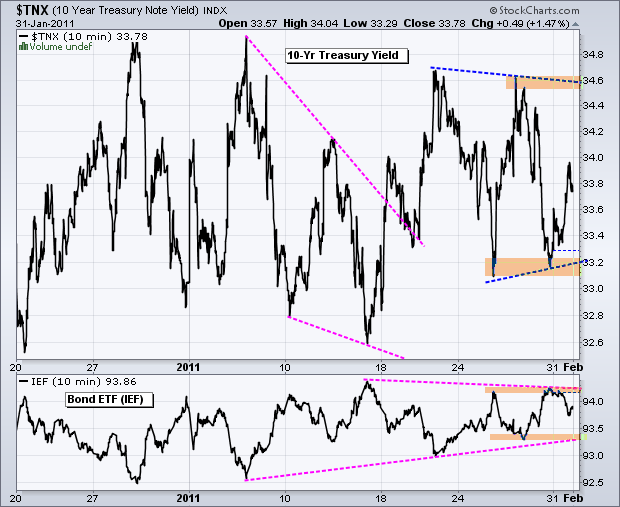Interest rates and bonds remain stuck in a never-ending trading range. Calling it "never-ending" will hopefully bring a quicker end to this consolidation. Bonds have been weighed down by rising commodity prices and strength in the economy. Oil surged over 7% the last two days and the Chicago PMI for January hit its highest level since 1998. Based on the chart and these fundamental factors, I remain bearish on bonds. Unrest in Egypt remains the wild card that could trigger a flight to safety trade, which would be bullish for bonds and the Dollar, and possibly gold. We saw this on Friday, but not on Monday. The 10-year Treasury Yield ($TNX) has traded between 32.5 and 35.5 since mid December (3.25% and 3.55%). A smaller triangle formed within this range and I am watching these boundaries for the first clue. A break above 34.6 would be bullish, but a break below 33.1 would be bearish (for yields). The opposite is true for bonds. The 7-10 year Bond ETF (IEF) would turn bullish on a break above 94.5 and the bearish on a break below 92.9.

The short-term evidence turned bearish with the sharp decline on Friday, January 28th. SPY broke support at 128, RSI move below 30 for the second time in as many weeks and two of the four breadth indicators turned bearish. Notice how SPY formed a series of falling wedges and flags on the way up. We could see something similar, but in reverse, on the way down. SPY became oversold after the decline to 127.5 and bounced back above 128.5 on Monday. Should a short-term downtrend commence here, I would expect resistance in the 129 area (±.30 points). I would also expect RSI to hit resistance in the 50-60 zone.


Key Economic Reports:
Tue - Feb 01 - 10:00 - Construction Spending
Tue - Feb 01 - 10:00 - ISM Index
Tue - Feb 01 - 15:00 - Auto/Truck Sales
Wed - Feb 02 - 07:00 - MBA Mortgage Purchase Index
Wed - Feb 02 - 07:30 - Challenger Job Cuts
Wed - Feb 02 - 08:15 - ADP Employment Change
Wed - Feb 02 - 10:30 - Oil Inventories
Thu - Feb 03 - 08:30 - Jobless Claims
Thu - Feb 03 - 10:00 - Factory Orders
Thu - Feb 03 - 10:00 - ISM Services
Thu - Feb 03 - 12:30 – Bernanke Speaks
Fri - Feb 04 - 08:30 - Employment Report
Charts of Interest: Tuesday and Thursday in separate post.
-----------------------------------------------------------------------------
This commentary and charts-of-interest are designed to stimulate thinking. This analysis is not a recommendation to buy, sell, hold or sell short any security (stock ETF or otherwise). We all need to think for ourselves when it comes to trading our own accounts. First, it is the only way to really learn. Second, we are the only ones responsible for our decisions. Think of these charts as food for further analysis. Before making a trade, it is important to have a plan. Plan the trade and trade the plan. Among other things, this includes setting a trigger level, a target area and a stop-loss level. It is also important to plan for three possible price movements: advance, decline or sideways. Have a plan for all three scenarios BEFORE making the trade. Consider possible holding times. And finally, look at overall market conditions and sector/industry performance.

